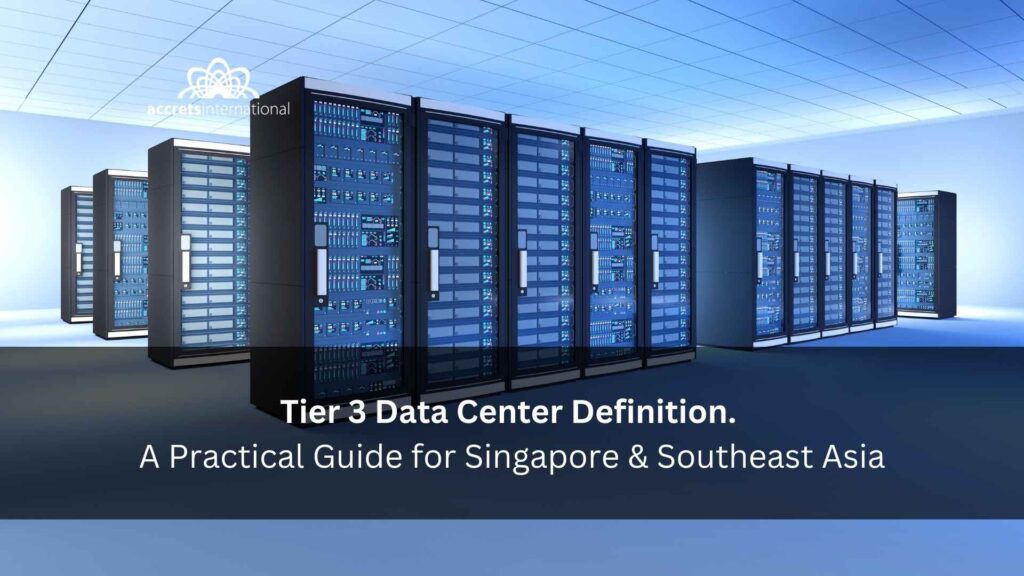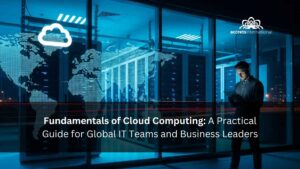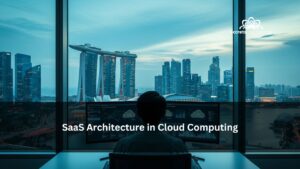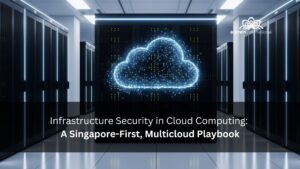A Tier 3 data center refers to a facility that offers concurrent maintainability, allowing critical components to be taken offline without impacting IT operations. It provides N+1 redundancy, dual distribution paths, and is designed for 99.982% uptime annually, translating to around 1.6 hours of downtime. In this article, we’ll explore what Tier 3 means, how it compares with Tier 1, 2, and 4 data centers, and how businesses in Singapore and Southeast Asia can decide what level of resilience they need. If you’re planning IT architecture or infrastructure upgrades, stay with us to the end as we break everything down with local context, technical clarity, and procurement-ready insights.
Table of Contents
ToggleTier 3, Canonically: What “Concurrently Maintainable” Really Means
The defining characteristic of Tier 3 is concurrent maintainability. That means every critical component—power, cooling, networking—can be serviced or replaced without disrupting service availability. To achieve that, Tier 3 facilities implement multiple independent distribution paths and N+1 redundancy on core infrastructure.
In other words, each system must include enough capacity to handle full load even if one component is offline. However, Tier 3 is not fault tolerant and it won’t guarantee uptime during simultaneous failures or process errors.
If you’re new to this, our short Tier 3 data center definition explainer breaks down the essentials for technical and business leaders alike.
How Tier 3 Is Built: Power & Cooling Topologies You Can Trust
Tier 3 data centers rely on predictable engineering models.
Power systems include utility feeds backed by N+1 generators, N+1 UPS modules, and A/B power distribution units (PDUs) feeding dual rack paths. Cooling designs use N+1 chillers and pumps, with airflow managed through redundant CRAC or CRAH units.
A chiller or UPS module can be replaced or serviced while the others carry the load without interrupting IT services. This ability to perform live maintenance is a core promise of the Tier 3 architecture.
Availability, By the Numbers: What 99.982% Means in Real Life
Tier 3 promises 99.982% uptime which equates to roughly 1.6 hours of downtime per year. This covers unplanned interruptions, not maintenance. Scheduled work happens without service impact thanks to redundancy.
However, it’s important to understand that operational discipline is essential. Poor execution can still cause outages even in a well-designed facility.
Tier 3 vs. Tier 4 (and vs. Tiers 1–2): Choose by Risk, Not Hype
The tier system reflects a hierarchy of availability:
- Tier 1: Basic power and cooling, no redundancy. Designed for about 28.8 hours downtime per year
- Tier 2: Some redundancy, but still single path. Around 22 hours per year
- Tier 3: N+1 redundancy and dual distribution paths. Around 1.6 hours per year
- Tier 4: Fully fault tolerant with 2N or 2N+1 redundancy and about 26 minutes of downtime annually
You can explore our full Tier 1 data center definition, as well as comparisons for Tier 4 and Tier 5 data centers.
When Tier 3 Is Enough and When You Should Go Higher
Tier 3 meets the needs of organizations that tolerate rare unplanned downtime but require operations to continue during maintenance. It suits use cases like private cloud cores, archive storage, or transactional apps that have HA at the application layer.
For example, fintech firms often combine Tier 3 data centers with cloud platforms to meet MAS compliance. Read our guide to cloud banking solutions for Singapore and Southeast Asia to see how this looks in practice.
Public agencies might prefer sovereign-grade isolation. For those, our overview of the GCC (Government Cloud) in Singapore outlines data classification, hosting controls, and procurement criteria.
Singapore & Southeast Asia Realities: Power, Climate, Connectivity, Compliance
Climate factors like high humidity, temperature, and corrosion risks must be designed for, particularly in tropical regions like Singapore, Malaysia, or Indonesia.
Network routes between countries introduce latency variability. Teams operating between Southeast Asia and mainland China should review how the Teridion cross-border connectivity solution can manage packet loss and route control.
Regulatory alignment matters too. Designs must respect PDPA and local equivalents, MAS TRM, and data residency expectations. Teams planning long-term infrastructure can explore available enterprise connectivity options that integrate compliance needs.
Design & Operations: Practices That Actually Deliver Tier 3 Outcomes
The design is only half the equation. Operations make or break availability.
Change control, well-documented SOPs or MOPs, periodic failover testing, and trained staff are all critical. Facilities with strong runbooks tend to outperform others with identical infrastructure.
Cybersecurity is also a crucial layer. Explore our services for cloud security consulting in Southeast Asia to assess risks beyond physical threats.
Teams wondering how to support the lifecycle of infrastructure should also read about IT infrastructure management services.
Hybrid Patterns: Tier 3 + Cloud (Private, Public, Multi)
Most modern deployments are hybrid. Tier 3 data centers house core systems, while public cloud handles burst or edge workloads.
To build this out, you can evaluate the advantages of Infrastructure-as-a-Service, and then understand the difference between PaaS and IaaS.
We also cover how to maintain consistency with Infrastructure-as-Code vs IaaS, and alternative options for VMware migration as organizations shift platforms.
Resilience Add-Ons: DR, Backups, and Managed Ops
Design resilience is improved when combined with disaster recovery and managed operations. Backups should be immutable, tested, and copied offsite. DR must align to RTO and RPO targets.
For cloud-first organizations, read our breakdown of managed vs cloud services and why governance matters in 2025’s AI-first era.
We also outline the top 7 benefits of managed cloud services to help you calculate real outcomes.
Procurement Cheatsheet: Requirements, Tests, and Red Flags
Ask the right questions before choosing a provider:
- Request certification (Design, Constructed Facility, Operational Sustainability)
- Require a live demonstration of maintenance-without-downtime scenarios
- Review historical incidents and mitigations
- Verify on-site spares, vendor SLAs, and response times
- Confirm staff training, escalation plans, and seasonal capacity buffers
To integrate all of this with orchestration layers, review how a managed cloud service provider should operate.
Conclusion: Putting Tier 3 to Work in Your Roadmap
Tier 3 is not just a classification. It is an architecture that balances resilience, uptime, and operational flexibility. In Singapore and Southeast Asia, where environmental and regulatory conditions present unique challenges, Tier 3 provides the right foundation for enterprise cloud and compliance-ready systems.
Accrets operates a certified Tier 3 private data center built for performance, scale, and security. To explore your options, contact our cloud experts for a free consultation.If you’re ready for a full-stack solution, our Managed IT Services offer operational coverage, recovery support, and proactive system management tailored to your needs.
Dandy Pradana is an Digital Marketer and tech enthusiast focused on driving digital growth through smart infrastructure and automation. Aligned with Accrets’ mission, he bridges marketing strategy and cloud technology to help businesses scale securely and efficiently.




